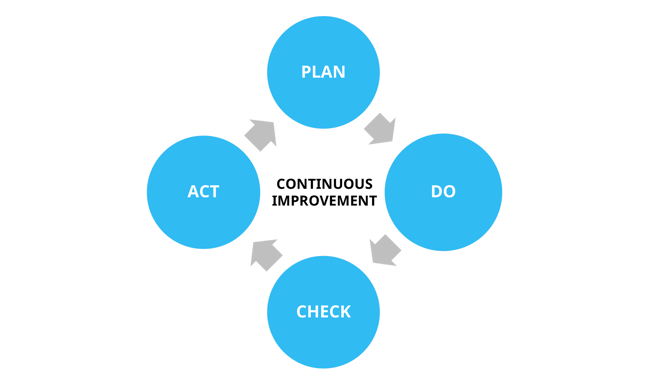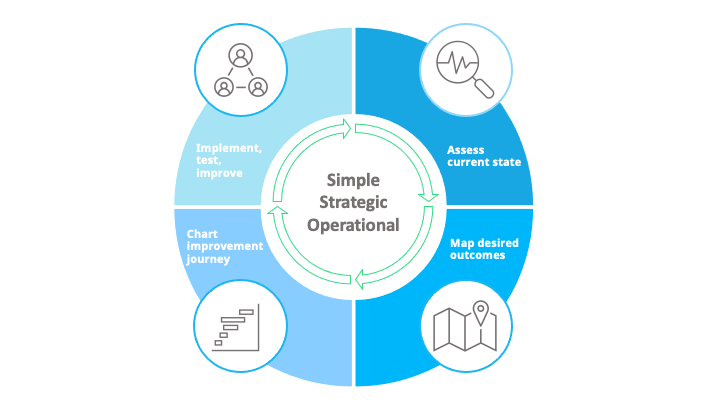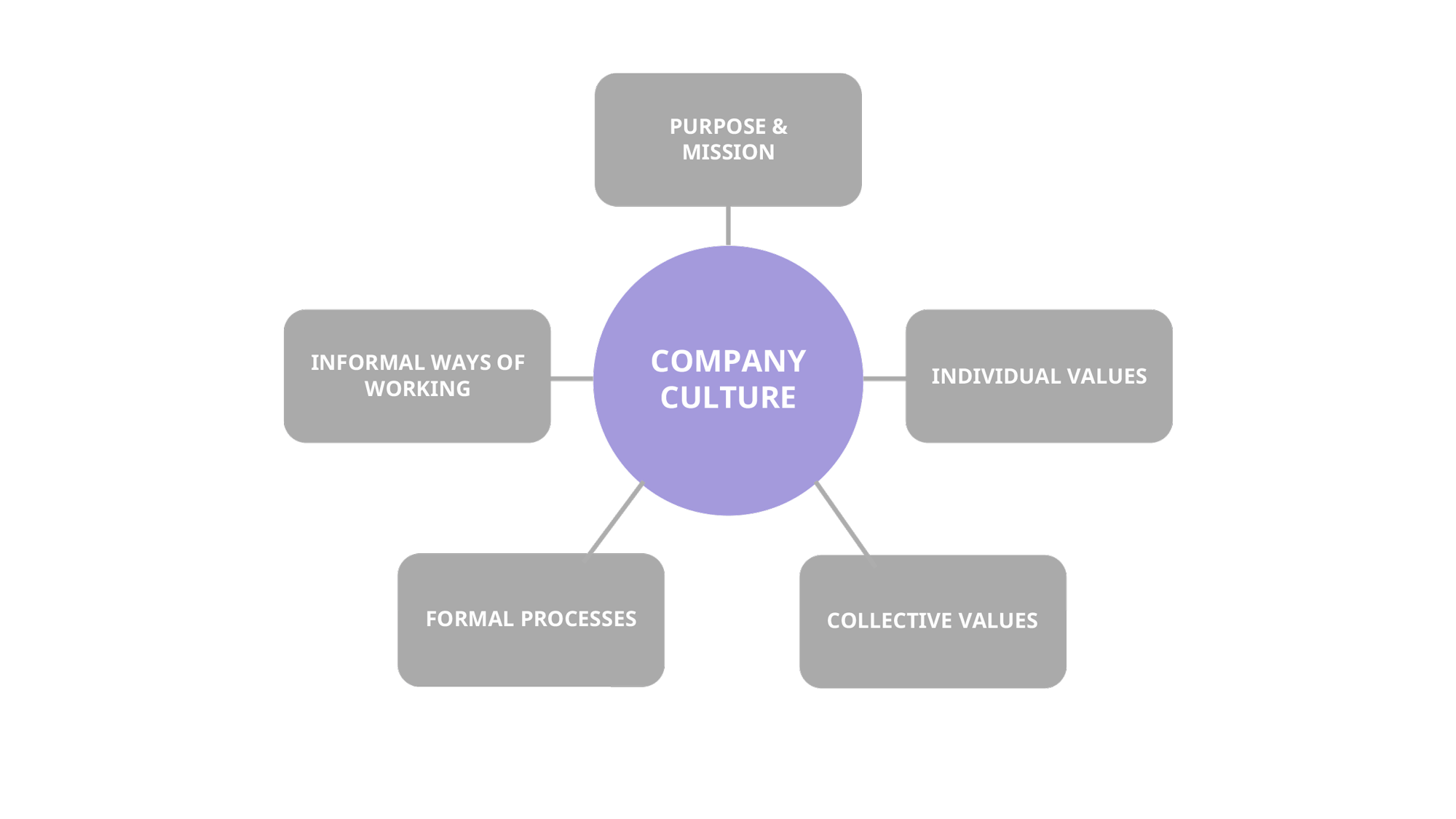How to Develop a Continuous Improvement Plan?
Organizations need to continuously improve if they want to stay in the game, maintain their competitive advantage and achieve long-term success. Even though most of us are aware of how important it is to strive to get better, both at an individual and at an organizational level, we often fail to make continuous improvement a regular practice.
Continuous improvement is common sense for most of us. It is something the majority strives to achieve whether it’s for personal or for professional development. We want to get better, to improve because it gives us meaning, makes us feel better and it’s rewarding.
But just like New Year’s resolutions, after the excitement of starting a new project, things slowly die down. We lose interest, we get back to old habits, and stop improving, until a new project emerges, and the pattern reoccurs.
Sustaining continuous improvement, as straightforward as it seems, is also difficult. So, in today’s article we’ll explain how to create a continuous improvement plan or program, stick to it, and make it a recurrent practice in your organization.

Table of contents
What is a Continuous Improvement plan?
We can see the active role of continuous improvement in innovation when we consider both new products, services or businesses and incremental innovations. So, if we zoom out, continuous improvement contributes to the success of different types of innovations, from incremental to new innovations.
As you can see, continuous improvement plays a major role in innovation, so naturally it’s one of our favourite topics which we already addressed extensively on our blog. Even so, for the purpose of this article, it’s still useful to explain briefly what we mean by continuous improvement.
Continuous improvement is a conscious, deliberate decision to continuously invest and focus on getting better. In the corporate context, continuous improvement is the ongoing process of improving products, services or processes.
The key word here is “conscious” because if you want to deliberately improve something, you need a plan that describes the steps ahead. So, a continuous improvement plan is just that. A guide for the decisions that lead to improvement.
Download the updated Complete Toolkit to Continuous Improvement and learn how to develop your own systematic processes today!
It’s good to note that even though throughout the article we use interchangeably the words plan and program, we refer to the same thing. The most important thing to remember is that whether you call it a plan or a program, both terms should consider not just the preparation work, but also the implementation and execution.
A continuous improvement plan is also a method of standardizing improvement throughout the organization. Even though a standard process is good for many organizations, larger companies can use it more like best practices, while still developing a continuous improvement program that responds to the needs of different departments, divisions, or teams.
Continuous improvement works best when it becomes a mindset and is ingrained in the key processes and practices of the organization.
Although a continuous improvement plan needs to consider the business goals and objectives of the entire organization, it should still be specific enough to address the problems and hidden opportunities in different divisions or departments. For example, the R&D department might need a different approach than the marketing one.

Many leaders acknowledge the role improvement plays in achieving excellence and innovation. They might strive to become better every day, but they play it by the ear, which can work, with the right mindset and enough dedication.
However, in larger organizations not everyone can do this actively so they could miss many opportunities to innovate. Now, let’s see why going with a well-though continuous improvement plan is a better option.
Why you need a continuous improvement plan?
So far continuous improvement seems straightforward, so why would you need a plan that tells you how to get better every day?
If we think of the New Year’s resolution analogy, and how many people fail to achieve them, we can spot some patterns that explain why having a plan and sticking to it could prevent that.
One of the issues stems from the race to the end. We focus so much on the bigger goal, that it becomes overwhelming and too difficult to attain. The key is to make small changes every day and split that bigger goal in smaller steps that lead to a change in behavior and mindset. To do that, we need to lay out a plan.
We focus so much on the bigger goal, that it becomes overwhelming and too difficult to attain. The key is to make small changes every day and split that bigger goal in smaller steps that lead to a change in behavior and mindset.
Another key aspect is that continuous improvement is seen as a journey with a destination, and once the goal is reached, it's done. This journey should never end if we want to see lasting behavior changes that integrate in the culture of the organization. This way, day-to-day activities will be directed towards improvement.
These day-to-day activities that add to improvements will eventually require you to make some choices. Continuous improvement can’t be applied on all areas at once. It becomes overwhelming and unproductive, whether it’s in your personal life or in a team within an organization. That’s why a continuous improvement plan should also consider the need to prioritize and make conscious choices.
Now, let’s go through a few, more specific benefits of planning for continuous improvement:
Provides focus and direction
At an organizational level, when so many people have to work towards common goals, it’s essential to provide a clear focus and direction. A continuous improvement plan puts into perspective the objectives of the organization and the roles and responsibilities of all those involved. It also helps explaining why something is important and needs improvement.
A visual representation of the goals, roles, and methods to achieve those makes it easier to solidify the objectives.

Win over stakeholders
Engaging relevant stakeholders in adopting continuous improvement practices in their everyday work is one of the contributing factors to successful innovation.
Whether these are shareholders that provide support and resources for your improvement initiatives, or employees that have valuable insight into improvement opportunities and how to go about those, a good plan can win them over. Worst case, they are not on board on the first try, but their feedback can help improve the plan.
Even though every organization has its share of people that are more resistant to change, manifesting a long-term vision can turn into a catalyst and motivator so both parties can benefit.
Encourage proactivity
Without a plan people tend to react to external factors. A plan helps you better control the actions that influence the company’s future and allows people to be proactive. This projection in the future helps you see past the quick wins. It gives time to ponder over actions that can be taken, instead of trying to constantly put out fires.
Improve overall business performance
This is rather a consequence of implementing continuous improvement, but having a plan to go about it, is indirectly leading to such business benefits.
Continuous improvement helps reduce costs, minimize waste, and increase operational efficiency. Most leaders are aware of such benefits so we won’t go into too much detail here, but the thing to remember is that developing a realistic, yet ambitious plan will have a great impact on the bottom line of the organization.
How to develop a continuous improvement plan
As already mentioned, at the end of the day continuous improvement is common sense and planning for it should not be overcomplicated. There are three main characteristics of a good continuous improvement plan: it has to be simple, strategic, and operational.
 Let’s briefly go through each of these, and then have a look at the main steps necessary in creating a continuous improvement plan.
Let’s briefly go through each of these, and then have a look at the main steps necessary in creating a continuous improvement plan.
Simple
There’s no need to overcomplicate things because first, it would discourage people from getting involved, and second, it will be more difficult to communicate it and implement it throughout the organization. It is after all, just about the small steps that can be done every day to amount to a big impact on the long term.
Strategic
Continuous improvement needs to be planned strategically because it should consider the vision of the organization, the goals, and objectives. Improving here and there with no specific goal would only benefit a few and not the organization as a whole.
Operational
A strategic approach gives direction, but the operational aspect tells you how to implement the plan, who is responsible, what are the timelines, required resources and metrics by which success is measured. Preparing to implement continuous improvement also requires you to decide on what processes work best as well as the tools that will support them.
Next, let’s go through a few basic steps that will get you started with a continuous improvement plan or even refine a current plan.
1. Assess the current state
In this first step you might want to start by collecting some information that helps you identify the strengths, weaknesses, opportunities and bottlenecks of current processes, products, services, or whatever you are specifically working on.
2. Map the desired outcomes
You know where you are, but where do you want to go? In this next step you map the business integrated goals and objectives. This step will also help you notice the gaps between the current state of things and the desired outcome.
Of course, things might sound too abstract at this point, and this is because in such an early stage of the planning it’s best to keep it simple and not overcomplicate things. What’s more, there are so many variables in continuous improvement, that each organization will have a different approach when it comes to specific actions.
3. Chart the improvement journey
After these first two steps, you can start charting your improvement journey. This stage describes how those gaps can be addressed through specific actions that contribute to sustained improvements and help develop the culture to enable them.
Now it’s the time to work a bit on some specific details like how you’ll know you have achieved your goals, and how you’ll measure success (for example, establish KPIs that tell you among other things, how much you’ve improved and how well was continuous improvement implemented). Also, think of defining responsibilities and a timeline.
4. Implement, test, adjust and scale
Again, this step will look very different from an organization to another, but the general guidelines can be applied mostly everywhere. To implement your plan, you start by engaging the workforce at all levels of the organization.
All stakeholders involved, from senior managers to frontline employees should understand the standards, procedures and best practices for continuous improvement. On top of that, managers need comprehensive skills to manage change, and handle complex processes.
To achieve this, it comes down to the commitment and involvement of the senior leaders. They play a key role in adjusting, sustaining, and scaling continuous improvement. This takes us to our next section, the key success factors in planning and sticking to continuous improvement.
Now, all this theory is interesting, but how does it look in practice? For the sake of clarity and brevity we simplified the plan to include four steps, but these are subject to change, develop and transform in each organization accordingly. So, let’s see things in practice through the example of a logistics company, Coyote logistics.
The company first assessed their state and realized a food shipper was spending $98 000 extra because of poor scheduling and communication. So, their goal was to eliminate additional costs, streamline communication between those involved in the process, increase pick-up performance, and improve operational efficiency.
To achieve this, they first mapped out their strategy, where key stakeholders could contribute with ideas to propose solutions, note benefits and challenges along the way.
Next, they took actions, tracked the projects on a regular basis and analyzed those actions and their results.
They eventually saved $85,000 in a year, decreased additional spendings to 84.81%, improved communication by eliminating unnecessary email exchanges. Their program did not end here, because they made sure to celebrate and communicate the results with their employees. They recognized and rewarded individuals and teams whose contribution moved the needle in the right direction.
Key success factors for a good CI plan
It’s easy to get caught in the planning itself and postpone implementation until you reach what you believe to be a perfect continuous improvement plan. This is a common mistake, that can derail implementation. Inevitably, a continuous improvement plan is also subject to improvement, so unless you execute it, it’s hard to spot the areas of the plan that need improvement.
Next, let’s see some key success factors that allows you to keep it simple, stay focused and move faster to the execution stage.
Business goals alignment
In an organization, change happens both bottom-up or top-down, but whatever the case, without strong alignment at the top, things will die down. This means that leaders and managers in charge with high level operations need to bring together the business goals and objectives and link them to the continuous improvement plan.
For example, at Lantmännen, a Nordic agricultural cooperative, executives linked their plan to specific financial targets in order to encourage improvement and innovative projects. They aimed at 6% growth in their core business and 2% growth in new organic ventures. These overarching goals went down from business units to product groups, and they ultimately reached a 13% annual growth rate.
Participative management
Management plays an important role in the success of bigger initiatives, especially if innovation is at stake, and failing to innovate can cost them the future of their company Leaders should be committed to actively support and advocate for continuous improvement.
There’s even research that shows how involvement from senior leaders is contributing to sustaining improvements. In fact, after analyzing data from 204 lean projects, they concluded that those with stronger support from head office showed 25% greater improvement after a year compared to those without that support, and 79% performed above average after the first year.
Projects with stronger support from head office showed 25% greater improvement after a year compared to those without that support, and 79% performed above average after the first year.
If leaders were not visibly supporting continuous improvement, frontline employees would think that the company is no longer committed.
Some good insights into how management can participate and keep their enthusiasm comes from a round of interviews with leaders who talked about sustaining continuous improvement in organizations. One VP mentioned their “immersion program” for lean management where senior leaders can develop their skills, see their peers achievements, and take part in Kaizen events to see continuous improvement in action.
Continuous improvement culture
For some people continuous improvement can feel exhausting, because not everyone is excited about change. This means that some companies have to work harder than others to build a culture of continuous improvement, if that hasn’t been the focus for them.
 Keeping people motivated and engaged is closely linked to the mindset and behaviors that have become the norm in the company. The continuous improvement culture also helps sustaining such practices on the long term.
Keeping people motivated and engaged is closely linked to the mindset and behaviors that have become the norm in the company. The continuous improvement culture also helps sustaining such practices on the long term.
Indeed, building a continuous improvement culture takes time, and requires some effort, but on the long run, it’s definitely worth it if you want your plan to be implemented successfully.
Effective communication
You can’t underestimate the role of communication when you want organization-wide support. Again, since the strategic planning comes from the top, leaders should not just communicate the program, but also use the right narrative to do it.
For example, the plan should clearly emphasize how it aligns with the organization’s purpose and how it’s addressing specific points that will also benefit employees. For instance, a hospital planned to focus on the patient care by decreasing the time personnel spent on paperwork. It was a win-win situation.
Communication should also continue throughout the program, not just early on. When leaders communicate and celebrate small wins and the role that employees have played in achieving these, employees’ motivation and engagement increases as well.
Sustained, ongoing efforts
To ensure enduring success, the continuous improvement plan should move away from project-based improvements that are usually a one-time thing. Reaching for the low hanging fruits is easier and does bring short-term results, but in the long term you’ll have less and less of those.
To sustain these efforts, you’ll want to see continued progress and that’s possible when you choose the right metrics that measure success. What improvements were done, what was their impact on the bottom line, or how were they contributing to achieving the bigger goal? These metrics will look different for each organization, but the important thing is to keep away from vanity metrics that don’t disclose the whole truth.
One example, if you want to keep employees engaged and focused, is to include lean management behaviours in the performance reviews. This way, people will have a clear overview of their impact after solving specific problems in their area.
Conclusion
If we go into the nitty gritty of planning an ideation process, there are many In the end, it’s important to remember not to get stuck on extensive planning, but to take real action. If you find yourself lost in the details, stop for a moment, take a step back and reflect on how you could keep a clear focus that allows decision makers to act.
Even though the initial hype and excitement of a new program will slowly die down, you should stick with the introduction of relevant improvements, as small or unexciting as they seem. In time, these small wins amount to bigger gains. If you rush into a new thing each time, you lose focus, and the long-term results will fail to come.
This kind of commitment will also contribute to changing the culture. Building a continuous improvement culture takes time and it’s a conscious effort, but with patience and perseverance you will get the desired results.
Every continuous improvement program needs the input of employees and Viima can support your needs, every step of the way, from idea collection to implementation. See it in action. Book a demo!






